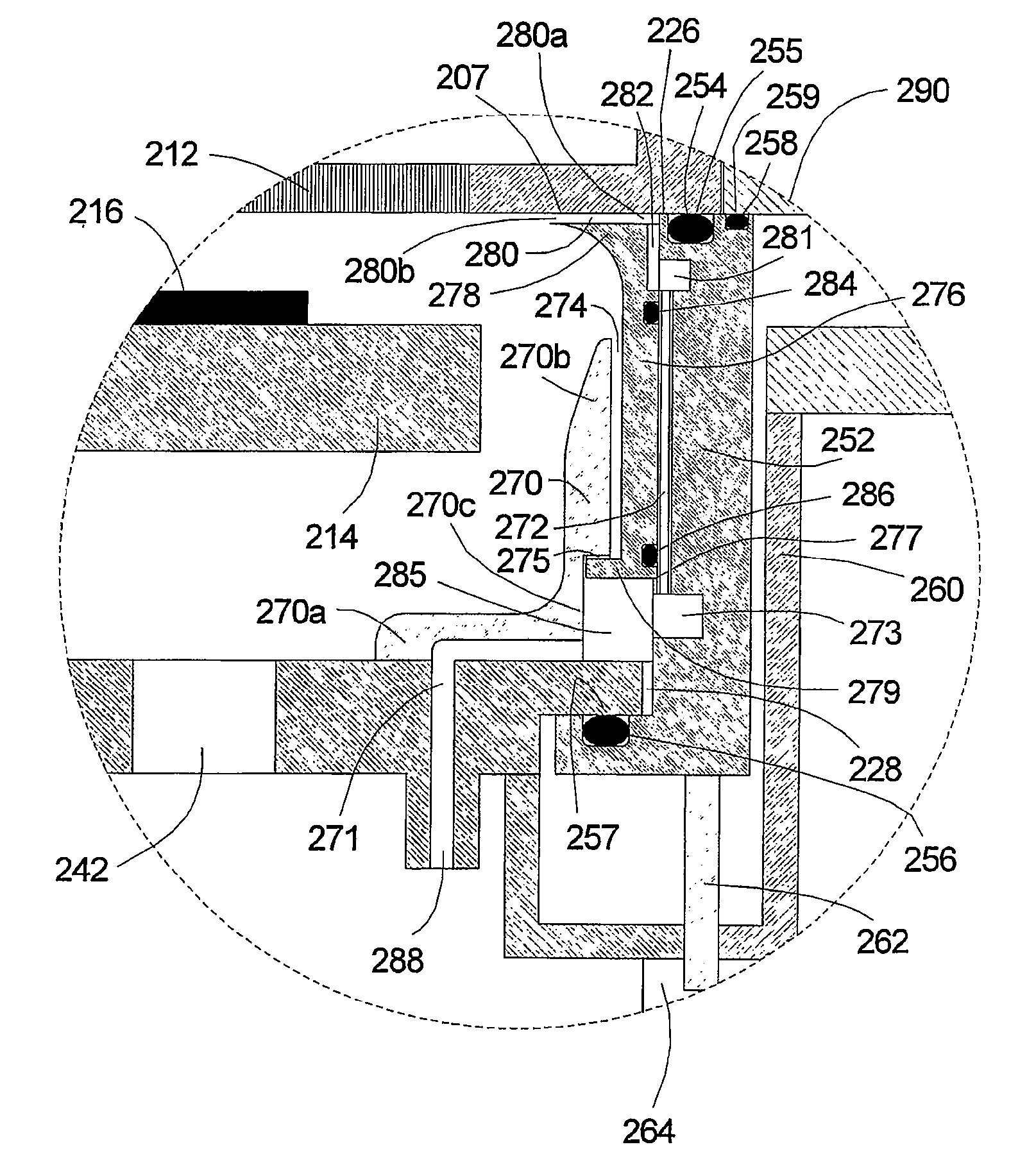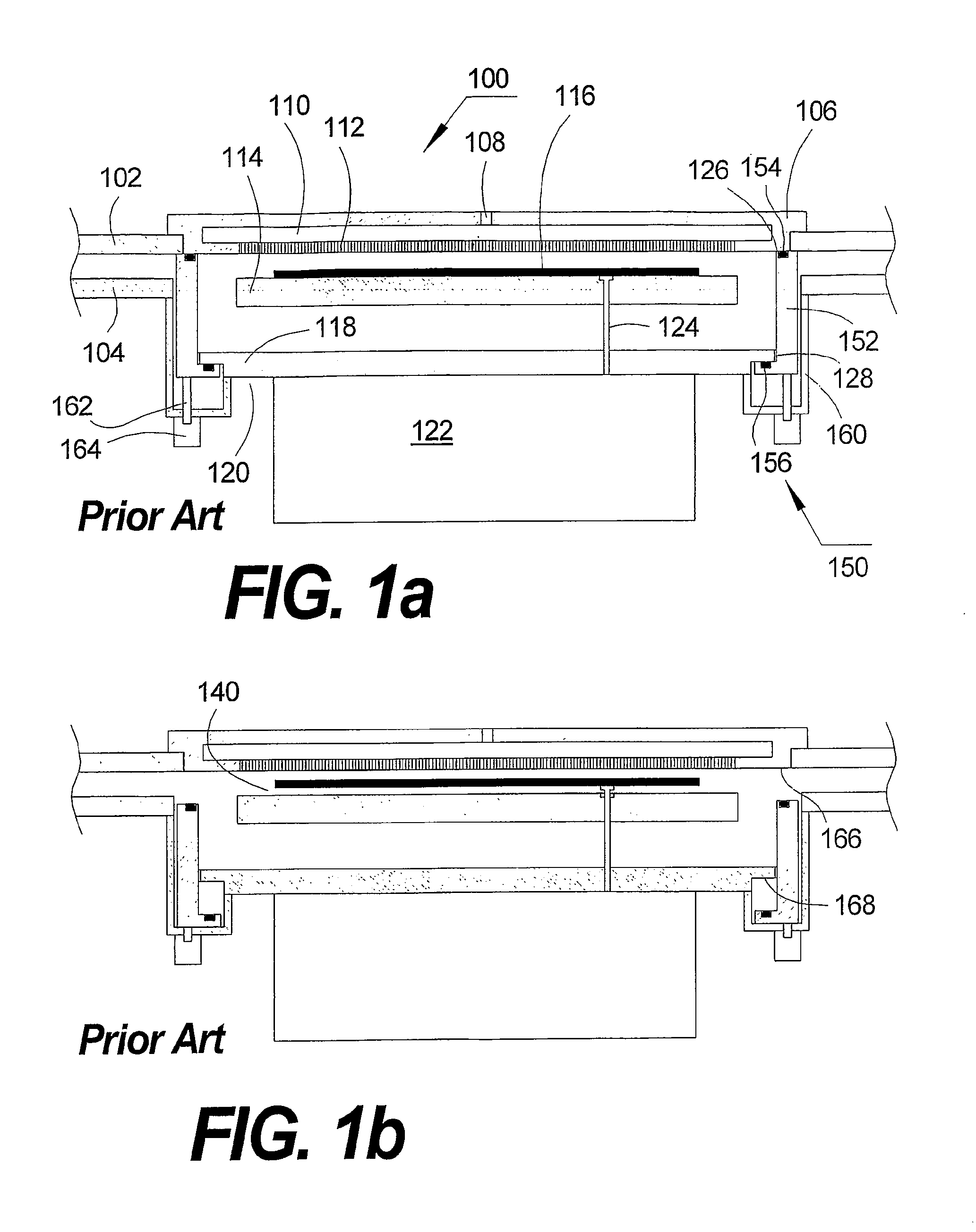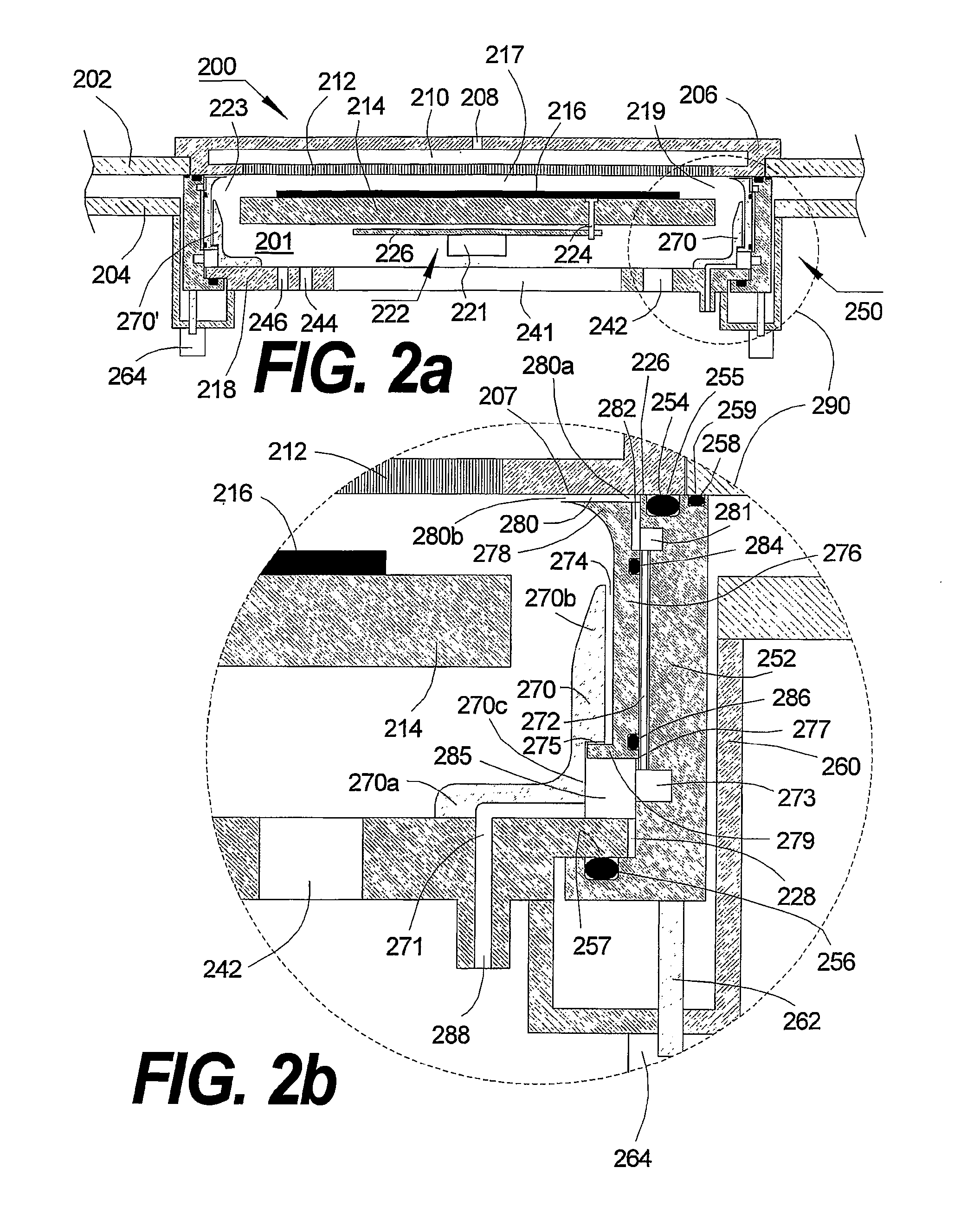Perimeter partition-valve with protected seals and associated small size process chambers and multiple chamber systems
a technology of process chambers and partition valves, applied in the field of substrate processing systems, can solve the problems of adverse impact on symmetry, affecting the uniformity and consistency of various process elements, and not being able to interface well with symmetry, so as to improve the safety of substrate placement members
- Summary
- Abstract
- Description
- Claims
- Application Information
AI Technical Summary
Benefits of technology
Problems solved by technology
Method used
Image
Examples
Embodiment Construction
A. Seal Protected Compact Perimeter Partition Valve
[0045]The perimeter partition valve (PPV) with perimeter seal protection according to the invention is practiced with a combination of gas plenum and a perimeter drift channel to effectively maintain a directional flow of inert gas out of the seal area. The perimeter gas plenum delivers a substantially unified flow of inert gas to the perimeter drift channel. The drift channel defines a high velocity flow of inert gas that minimizes the diffusion of reactive species to the seal area. Improved maintainability is achieved with removable perimeter shields (liners) wherein unavoidable deposition or condensation of film deposits is substantially limited onto easily removable parts. A removable sliding liner attached to the PPV slide provides for a smooth and round process chamber corner and a substantially long seal protecting drift channel. Complementary, a stationary liner integrates with the sliding liner to define a smooth gas flow p...
PUM
| Property | Measurement | Unit |
|---|---|---|
| length | aaaaa | aaaaa |
| inner diameter | aaaaa | aaaaa |
| inner diameter | aaaaa | aaaaa |
Abstract
Description
Claims
Application Information
 Login to View More
Login to View More - R&D
- Intellectual Property
- Life Sciences
- Materials
- Tech Scout
- Unparalleled Data Quality
- Higher Quality Content
- 60% Fewer Hallucinations
Browse by: Latest US Patents, China's latest patents, Technical Efficacy Thesaurus, Application Domain, Technology Topic, Popular Technical Reports.
© 2025 PatSnap. All rights reserved.Legal|Privacy policy|Modern Slavery Act Transparency Statement|Sitemap|About US| Contact US: help@patsnap.com



